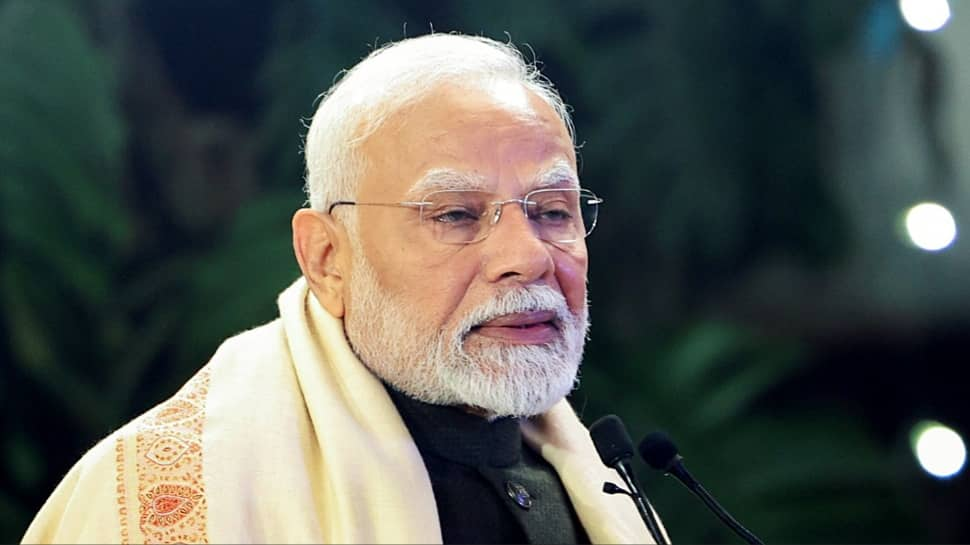 |
|
Prime Minister Narendra Modi's recent speech in Khajuraho, Madhya Pradesh, served as a platform for a sharp critique of the Congress party, juxtaposed with a celebration of the Bharatiya Janata Party's (BJP) achievements. The core of his address revolved around contrasting governance styles, emphasizing the BJP's commitment to effective implementation and highlighting what he perceives as the Congress's failures. Modi's attack wasn't solely focused on current political dynamics; he strategically incorporated historical narratives, particularly referencing B.R. Ambedkar's contributions to water conservation, an area where he accused the Congress of neglecting to give due credit. This tactic skillfully intertwined political maneuvering with a broader historical interpretation.
The Prime Minister's assertion that Babasaheb Ambedkar played a pivotal role in shaping India's water conservation policies, specifically mentioning the establishment of the Central Water Commission, is a significant claim. By attributing this achievement to Ambedkar, a revered figure across the political spectrum, Modi aimed to resonate with a wider audience and simultaneously discredit the Congress's legacy. The implication was that the Congress, despite its long tenure in power, failed to acknowledge and build upon Ambedkar's foundational work in water management. This narrative carefully positioned the BJP as the true inheritor of Ambedkar's vision, emphasizing its current initiatives in water resource management, and implicitly suggesting the Congress's past negligence contributed to ongoing water-related challenges in regions like Bundelkhand.
Modi's speech also extensively highlighted the BJP government's various welfare schemes, including the PM Kisan Samman Nidhi Yojana and the Ladli Behna Yojana. These examples served as a powerful demonstration of the BJP's commitment to effective governance, contrasted with what he described as the Congress's ineffective, announcement-driven approach. By emphasizing tangible benefits reaching the people—particularly farmers and women—Modi aimed to showcase the BJP's populist credentials and underscore the party's focus on direct welfare delivery. The mention of the substantial financial assistance provided to farmers through PM Kisan Samman Nidhi Yojana and the success of the Ladli Behna Yojana in Madhya Pradesh, directly linked to the opening of bank accounts for women, underscored the government's commitment to inclusive growth and development.
The juxtaposition of the BJP's present-day accomplishments with the Congress's past failures formed the strategic backbone of Modi's address. He explicitly linked the Congress's long period in power with a lack of effective governance, contrasting it with the BJP's perceived success in resolving long-standing challenges, particularly focusing on water management. He presented the BJP as a party that actively seeks long-term solutions, whereas he characterized the Congress as a party solely focused on making announcements without delivering tangible results. This contrasting portrayal strategically aims to consolidate support for the BJP and position them as the more efficient and effective party capable of delivering positive change for the Indian population.
Furthermore, Modi's mention of Atal Bihari Vajpayee's centennial birth anniversary served as a strategic manoeuvre, seamlessly weaving in a tribute to a highly respected former Prime Minister while further highlighting the BJP's legacy of effective governance. The announcement of the construction of over 1100 Atal Gram Seva Sadans in Madhya Pradesh served as a powerful reminder of Vajpayee's contribution to rural development and further strengthened the BJP's narrative of sustained commitment to public welfare. By linking the current initiatives to the legacy of Vajpayee, Modi aimed to build upon the established goodwill and trust associated with the former Prime Minister, further enhancing the BJP's image.
In essence, Modi's speech in Khajuraho was a meticulously crafted political performance. It strategically combined a sharp critique of the Congress party with a celebration of the BJP's achievements, skillfully utilizing historical narratives and highlighting welfare schemes to resonate with a broad audience. The skillful use of historical figures like Ambedkar and Vajpayee served to bolster the BJP's claim of superior governance and underscore its commitment to long-term solutions for pressing national challenges. The overall message projected an image of a party deeply invested in the welfare of the people and resolutely focused on tangible results, effectively contrasting its approach with that of the Congress party.
